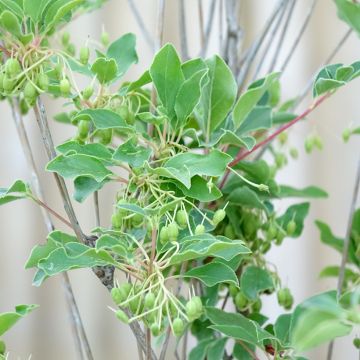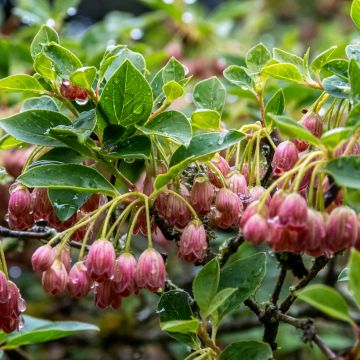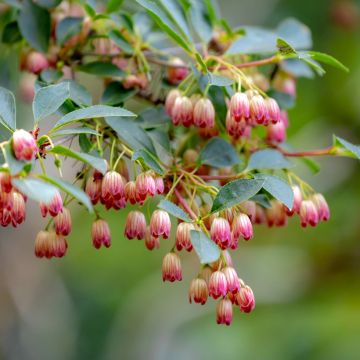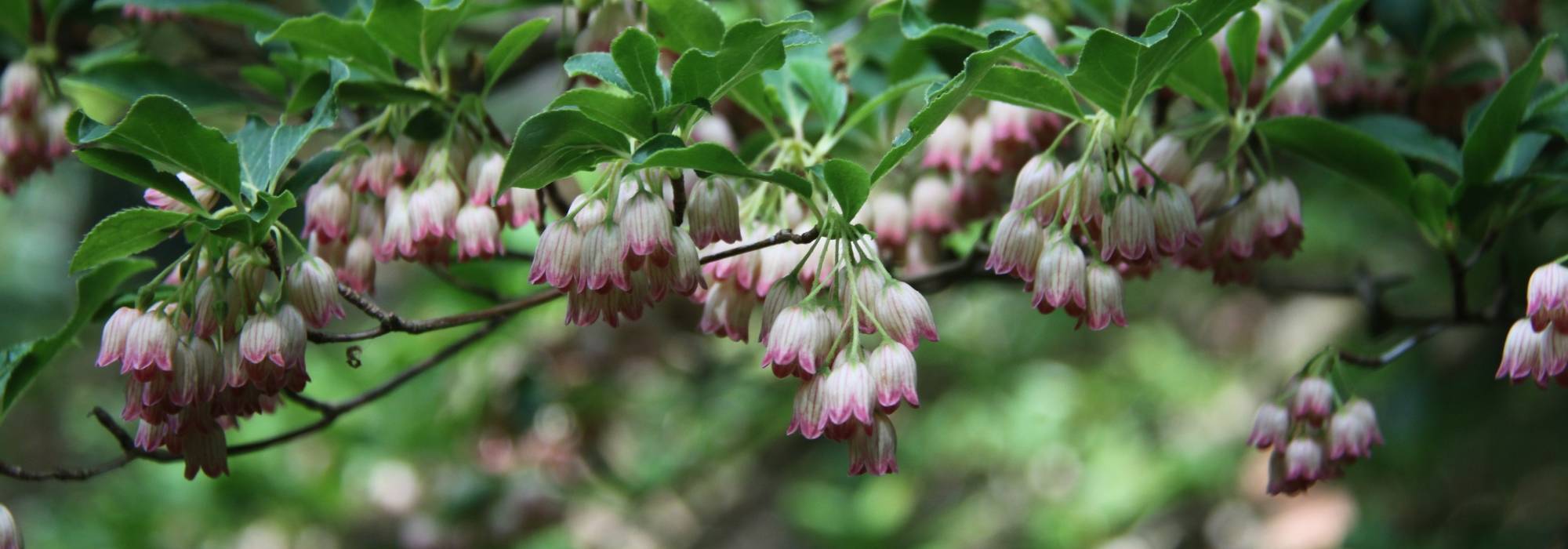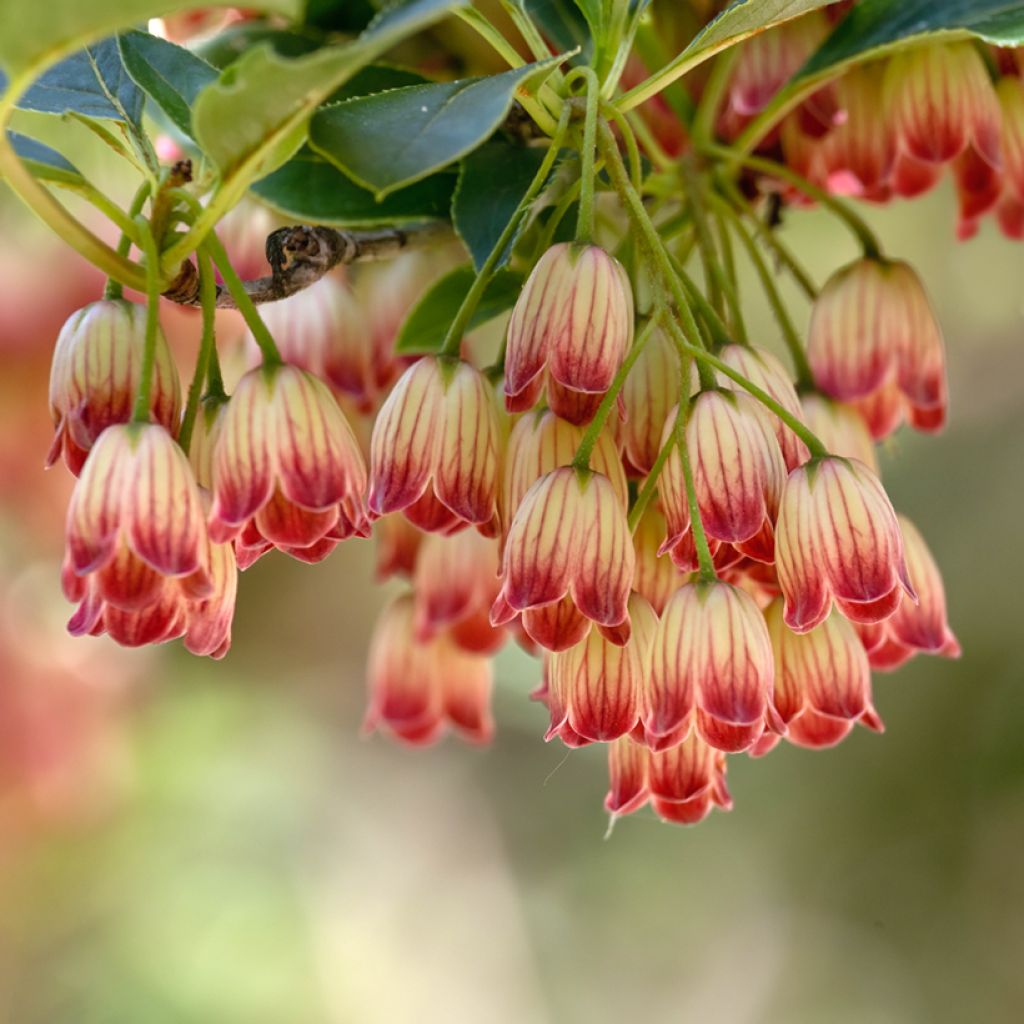

Enkianthus campanulatus Pagoda
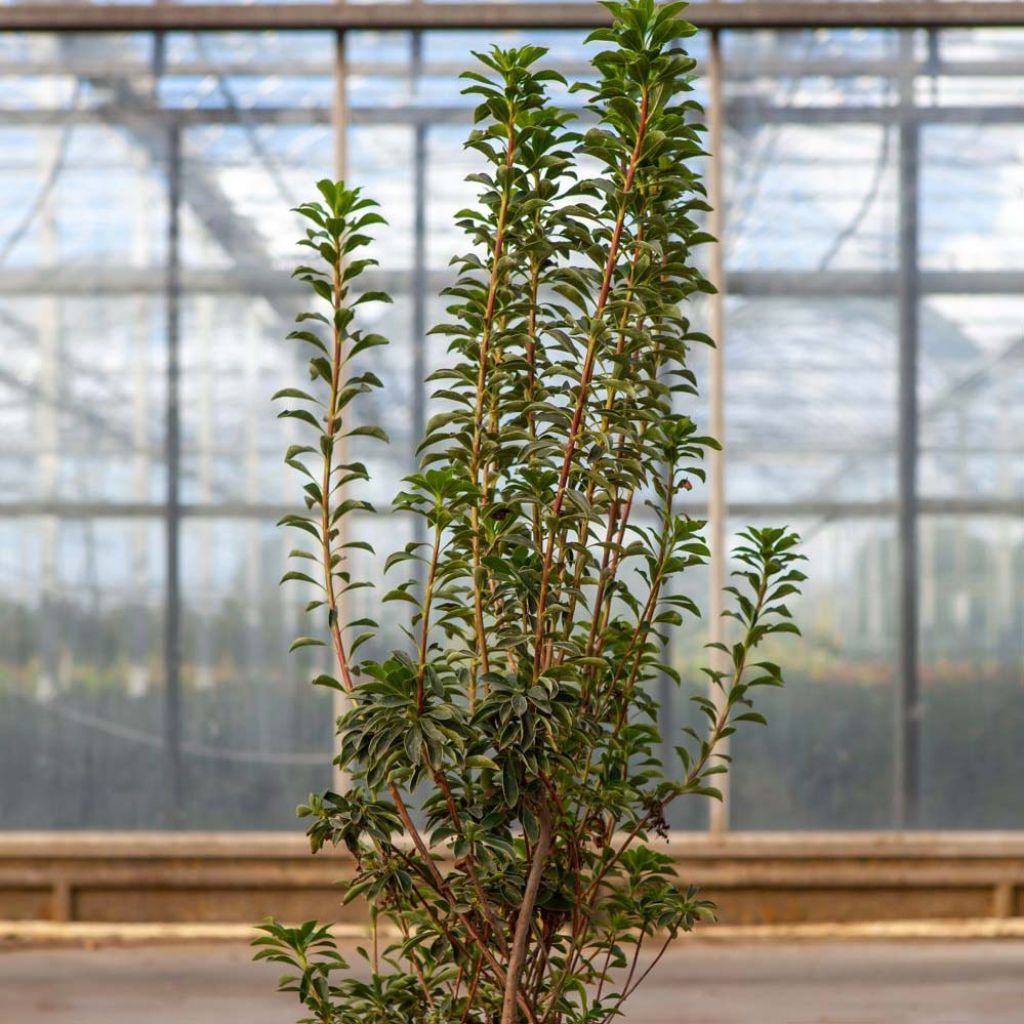

Enkianthus campanulatus Pagoda
Enkianthus campanulatus Pagoda
Enkianthus campanulatus Pagode
Redvein Enkianthus
Special offer!
Receive a €20 voucher for any order over €90 (excluding delivery costs, credit notes, and plastic-free options)!
1- Add your favorite plants to your cart.
2- Once you have reached €90, confirm your order (you can even choose the delivery date!).
3- As soon as your order is shipped, you will receive an email containing your voucher code, valid for 3 months (90 days).
Your voucher is unique and can only be used once, for any order with a minimum value of €20, excluding delivery costs.
Can be combined with other current offers, non-divisible and non-refundable.
Why not try an alternative variety in stock?
View all →This plant carries a 24 months recovery warranty
More information
We guarantee the quality of our plants for a full growing cycle, and will replace at our expense any plant that fails to recover under normal climatic and planting conditions.
Would this plant suit my garden?
Set up your Plantfit profile →
Description
The 'Enkianthus campanulatus 'Pagode' is a variety of Campanulate Andromeda with narrower and longer flowers, white with broad pink and carmine edges. This rare ericaceous bush is highly ornamental and deserves to be planted in isolation or in a pot in a small garden where its tall habit with erect branches dividing into whorls to form regular tiers covered with small, light, ovate, dark green and gently undulate foliage can be easily admired. This unique cover shelters delicate flowering in drooping clusters of campanulate, fragrant pinkish-red flowers from April to May, which also has the advantage of attracting pollinators to the garden. In autumn, its foliage turns orange-red before falling to the ground. The campanulate enkianthus is an exceptionally hardy species that thrive easily in partial shade or shade, in the company of rhododendrons and azaleas, in acidic, moist, and even poor soil.
Native to Japan and southern China, the Enkianthus campanulatus belongs to the Ericaceae family, just like heathers and Pieris, to which it bears some resemblance. It is a deciduous bush of cool and humus-rich undergrowth, perfectly hardy but intolerant to limestone and dry soils.
The 'Pagoda' cultivar is distinguished from the type mainly by its narrower and elongated flowers, white with pink and carmine edges. This slow-growing bush will reach, on average, 2m (7ft) in height and 1.5m (5ft) in width after many years. Its habit is unique, open and erect, almost columnar, bushy and composed of regularly tiered branches. The original flowering is one of the major assets of this plant. Depending on the climate, it appears for at least three weeks from April to June. The flowers are borne on short branches located at the ends of the branches, just below the foliage. The flowers, about 1.2 cm (1in) in diameter, slightly fragrant, pendulous, and bell-shaped, are suspended on slightly raspberry-tinted, downy peduncles and gathered in dense clusters of 12 to 15. Their colour is white with pink and red edges. The flowering is melliferous and nectariferous. The deciduous foliage is composed of small, finely dentate leaves, 3 to 5 cm (1 to 2in) long and 2 cm (1in) wide. They appear to be arranged in tiers at the ends of the branches and have a dark green, shiny colour from spring to summer. The undersides of the leaves are tinged with red along the veins. The autumn colours, orange-red, are very bright.
This is a choice bush for spaces with little light. The tiered and erect habit of the campanulate andromeda is exceptionally refined in a pot on a patio or in isolation in a small garden. It is one of the few deciduous heath bushes, so if you have more space, plant it in ericaceous soil under a grove of Japanese maples, accompanied by evergreen azaleas and camellias, and shade-loving perennials such as hostas, Solomon's seals, ferns, Epimedium and Caucasian forget-me-nots.
Enkianthus campanulatus Pagoda in pictures




Plant habit
Flowering
Foliage
Botanical data
Enkianthus
campanulatus
Pagode
Ericaceae
Redvein Enkianthus
Cultivar or hybrid
Planting and care
The Enkianthus campanulatus likes semi-shaded exposures, sheltered from drying East winds. Plant it in fresh, well-drained, light, humus-rich, fertile, acidic soil. This bush tolerates neither limestone nor drought. With a shallow root system, plant it in a pit wider than deep, filled with a mixture of ericaceous soil and leaf compost, especially in limestone soil. You can protect it in winter by covering the base with straw or dry leaves. This mulching will also help protect its base from drying out in summer. This bush does not require pruning. It is resistant to diseases.
Planting period
Intended location
Care
Planting & care advice
This item has not been reviewed yet - be the first to leave a review about it.
Haven't found what you were looking for?
Hardiness is the lowest winter temperature a plant can endure without suffering serious damage or even dying. However, hardiness is affected by location (a sheltered area, such as a patio), protection (winter cover) and soil type (hardiness is improved by well-drained soil).

Photo Sharing Terms & Conditions
In order to encourage gardeners to interact and share their experiences, Promesse de fleurs offers various media enabling content to be uploaded onto its Site - in particular via the ‘Photo sharing’ module.
The User agrees to refrain from:
- Posting any content that is illegal, prejudicial, insulting, racist, inciteful to hatred, revisionist, contrary to public decency, that infringes on privacy or on the privacy rights of third parties, in particular the publicity rights of persons and goods, intellectual property rights, or the right to privacy.
- Submitting content on behalf of a third party;
- Impersonate the identity of a third party and/or publish any personal information about a third party;
In general, the User undertakes to refrain from any unethical behaviour.
All Content (in particular text, comments, files, images, photos, videos, creative works, etc.), which may be subject to property or intellectual property rights, image or other private rights, shall remain the property of the User, subject to the limited rights granted by the terms of the licence granted by Promesse de fleurs as stated below. Users are at liberty to publish or not to publish such Content on the Site, notably via the ‘Photo Sharing’ facility, and accept that this Content shall be made public and freely accessible, notably on the Internet.
Users further acknowledge, undertake to have ,and guarantee that they hold all necessary rights and permissions to publish such material on the Site, in particular with regard to the legislation in force pertaining to any privacy, property, intellectual property, image, or contractual rights, or rights of any other nature. By publishing such Content on the Site, Users acknowledge accepting full liability as publishers of the Content within the meaning of the law, and grant Promesse de fleurs, free of charge, an inclusive, worldwide licence for the said Content for the entire duration of its publication, including all reproduction, representation, up/downloading, displaying, performing, transmission, and storage rights.
Users also grant permission for their name to be linked to the Content and accept that this link may not always be made available.
By engaging in posting material, Users consent to their Content becoming automatically accessible on the Internet, in particular on other sites and/or blogs and/or web pages of the Promesse de fleurs site, including in particular social pages and the Promesse de fleurs catalogue.
Users may secure the removal of entrusted content free of charge by issuing a simple request via our contact form.
The flowering period indicated on our website applies to countries and regions located in USDA zone 8 (France, the United Kingdom, Ireland, the Netherlands, etc.)
It will vary according to where you live:
- In zones 9 to 10 (Italy, Spain, Greece, etc.), flowering will occur about 2 to 4 weeks earlier.
- In zones 6 to 7 (Germany, Poland, Slovenia, and lower mountainous regions), flowering will be delayed by 2 to 3 weeks.
- In zone 5 (Central Europe, Scandinavia), blooming will be delayed by 3 to 5 weeks.
In temperate climates, pruning of spring-flowering shrubs (forsythia, spireas, etc.) should be done just after flowering.
Pruning of summer-flowering shrubs (Indian Lilac, Perovskia, etc.) can be done in winter or spring.
In cold regions as well as with frost-sensitive plants, avoid pruning too early when severe frosts may still occur.
The planting period indicated on our website applies to countries and regions located in USDA zone 8 (France, United Kingdom, Ireland, Netherlands).
It will vary according to where you live:
- In Mediterranean zones (Marseille, Madrid, Milan, etc.), autumn and winter are the best planting periods.
- In continental zones (Strasbourg, Munich, Vienna, etc.), delay planting by 2 to 3 weeks in spring and bring it forward by 2 to 4 weeks in autumn.
- In mountainous regions (the Alps, Pyrenees, Carpathians, etc.), it is best to plant in late spring (May-June) or late summer (August-September).
The harvesting period indicated on our website applies to countries and regions in USDA zone 8 (France, England, Ireland, the Netherlands).
In colder areas (Scandinavia, Poland, Austria...) fruit and vegetable harvests are likely to be delayed by 3-4 weeks.
In warmer areas (Italy, Spain, Greece, etc.), harvesting will probably take place earlier, depending on weather conditions.
The sowing periods indicated on our website apply to countries and regions within USDA Zone 8 (France, UK, Ireland, Netherlands).
In colder areas (Scandinavia, Poland, Austria...), delay any outdoor sowing by 3-4 weeks, or sow under glass.
In warmer climes (Italy, Spain, Greece, etc.), bring outdoor sowing forward by a few weeks.






























